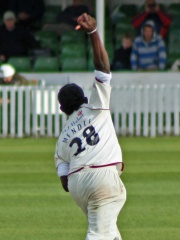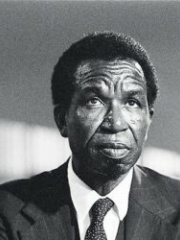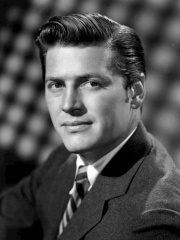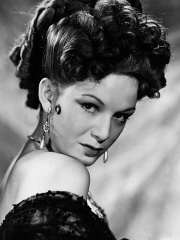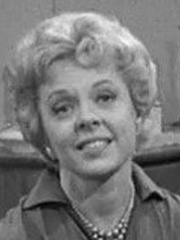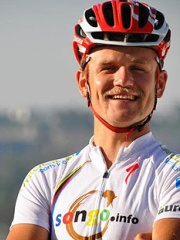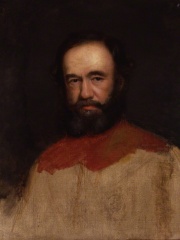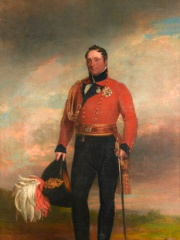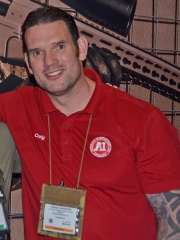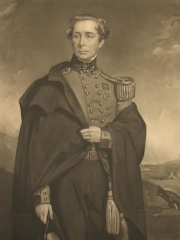Military Personnel
Patrick Kay
1921 - 2013
EN.WIKIPEDIA PAGE VIEWS (PV)

 Patrick Kay
Patrick Kay
Major-General Patrick Richard Kay, (1 August 1921 – 19 September 2013) was a senior Royal Marines officer and civil servant. He served as Commanding Officer of 43 Commando, Commanding Officer of the Amphibious Training Unit and Chief of Staff, Royal Marines. Following retirement from the military, he became Director of Naval Security and then Secretary of the Defence, Press and Broadcasting Advisory Committee. Read more on Wikipedia
His biography is available in 1 different languages on Wikipedia. Patrick Kay is the 2,133rd most popular military personnel (down from 2,063rd in 2024), the 9,715th most popular biography from United Kingdom (down from 9,023rd in 2019) and the 135th most popular British Military Personnel.
Memorability Metrics
Page views of Patrick Kay by language
Among Military Personnels
Among military personnels, Patrick Kay ranks 2,133 out of 2,058. Before him are Ajantha Mendis, Bhawana Kanth, Mohana Singh Jitarwal, Priya Jhingan, Noah Nirmal Tom, and Luke McCormack.
Most Popular Military Personnels in Wikipedia
Go to all RankingsAjantha Mendis
1985 - Present
HPI: 27.34
Rank: 2,127
Bhawana Kanth
1992 - Present
HPI: 27.09
Rank: 2,128
Mohana Singh Jitarwal
1992 - Present
HPI: 26.40
Rank: 2,129
Priya Jhingan
HPI: 23.15
Rank: 2,130
Noah Nirmal Tom
1994 - Present
HPI: 12.15
Rank: 2,131
Luke McCormack
HPI: 9.50
Rank: 2,132
Patrick Kay
1921 - 2013
HPI: 9.39
Rank: 2,133
Contemporaries
Among people born in 1921, Patrick Kay ranks 475. Before him are Patricia Barry, Cyprian Ekwensi, Gale Robbins, Gordon MacRae, Jean Kent, and Barbara Perry. After him is Jack Rayner. Among people deceased in 2013, Patrick Kay ranks 572. Before him are Burry Stander, Donna Hartley, Sophiya Haque, Michael Hastings, Ned Vizzini, and Steven Muller.
Others Born in 1921
Go to all RankingsPatricia Barry
ACTOR
1921 - 2016
HPI: 47.00
Rank: 469
Cyprian Ekwensi
WRITER
1921 - 2007
HPI: 46.78
Rank: 470
Gale Robbins
ACTOR
1921 - 1980
HPI: 46.74
Rank: 471
Gordon MacRae
ACTOR
1921 - 1986
HPI: 46.10
Rank: 472
Jean Kent
ACTOR
1921 - 2013
HPI: 45.73
Rank: 473
Barbara Perry
ACTOR
1921 - 2019
HPI: 44.22
Rank: 474
Patrick Kay
MILITARY PERSONNEL
1921 - 2013
HPI: 9.39
Rank: 475
Jack Rayner
ATHLETE
1921 - 2008
HPI: 9.39
Rank: 476
Others Deceased in 2013
Go to all RankingsBurry Stander
CYCLIST
1987 - 2013
HPI: 35.21
Rank: 566
Donna Hartley
ATHLETE
1955 - 2013
HPI: 35.18
Rank: 567
Sophiya Haque
ACTOR
1971 - 2013
HPI: 34.93
Rank: 568
Michael Hastings
WRITER
1980 - 2013
HPI: 33.87
Rank: 569
Ned Vizzini
WRITER
1981 - 2013
HPI: 33.47
Rank: 570
Steven Muller
ATHLETE
1927 - 2013
HPI: 33.37
Rank: 571
Patrick Kay
MILITARY PERSONNEL
1921 - 2013
HPI: 9.39
Rank: 572
In United Kingdom
Among people born in United Kingdom, Patrick Kay ranks 9,728 out of NaN. Before him are Daniel Watkins (null), Jessie Knight (null), Ashley Jackson (null), Curtis Thompson (null), Harry Glover (null), and Nadia Power (1998). After him are Heriniavo Rasolonjatovo (1998), Tanya Watson (2001), Junayna Ahmed (2003), Amira Kheris (1999), Carla Scicluna (2001), and Katie Mullan (1994).
Others born in United Kingdom
Go to all RankingsDaniel Watkins
ATHLETE
HPI: 9.50
Rank: 9,722
Jessie Knight
ATHLETE
HPI: 9.50
Rank: 9,723
Ashley Jackson
ATHLETE
HPI: 9.50
Rank: 9,724
Curtis Thompson
ATHLETE
HPI: 9.50
Rank: 9,725
Harry Glover
ATHLETE
HPI: 9.50
Rank: 9,726
Nadia Power
ATHLETE
1998 - Present
HPI: 9.43
Rank: 9,727
Patrick Kay
MILITARY PERSONNEL
1921 - 2013
HPI: 9.39
Rank: 9,728
Heriniavo Rasolonjatovo
SWIMMER
1998 - Present
HPI: 9.27
Rank: 9,729
Tanya Watson
ATHLETE
2001 - Present
HPI: 9.15
Rank: 9,730
Junayna Ahmed
SWIMMER
2003 - Present
HPI: 8.96
Rank: 9,731
Amira Kheris
ATHLETE
1999 - Present
HPI: 8.95
Rank: 9,732
Carla Scicluna
ATHLETE
2001 - Present
HPI: 8.93
Rank: 9,733
Katie Mullan
ATHLETE
1994 - Present
HPI: 8.91
Rank: 9,734
Among Military Personnels In United Kingdom
Among military personnels born in United Kingdom, Patrick Kay ranks 135. Before him are Andy McNab (1959), Sir James Outram, 1st Baronet (1803), Rowland Hill, 1st Viscount Hill (1772), Craig Harrison (1974), George Cathcart (1794), and Chris Ryan (1961).
Andy McNab
1959 - Present
HPI: 50.40
Rank: 129
Sir James Outram, 1st Baronet
1803 - 1863
HPI: 49.46
Rank: 130
Rowland Hill, 1st Viscount Hill
1772 - 1842
HPI: 49.19
Rank: 131
Craig Harrison
1974 - Present
HPI: 48.49
Rank: 132
George Cathcart
1794 - 1854
HPI: 47.18
Rank: 133
Chris Ryan
1961 - Present
HPI: 43.56
Rank: 134
Patrick Kay
1921 - 2013
HPI: 9.39
Rank: 135
